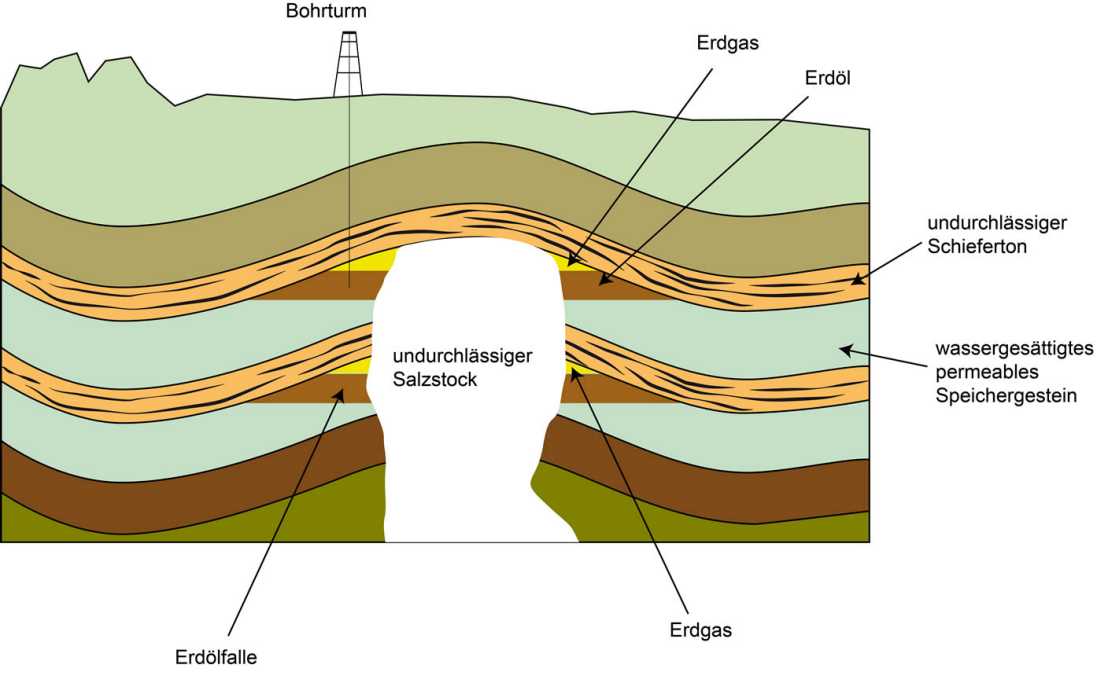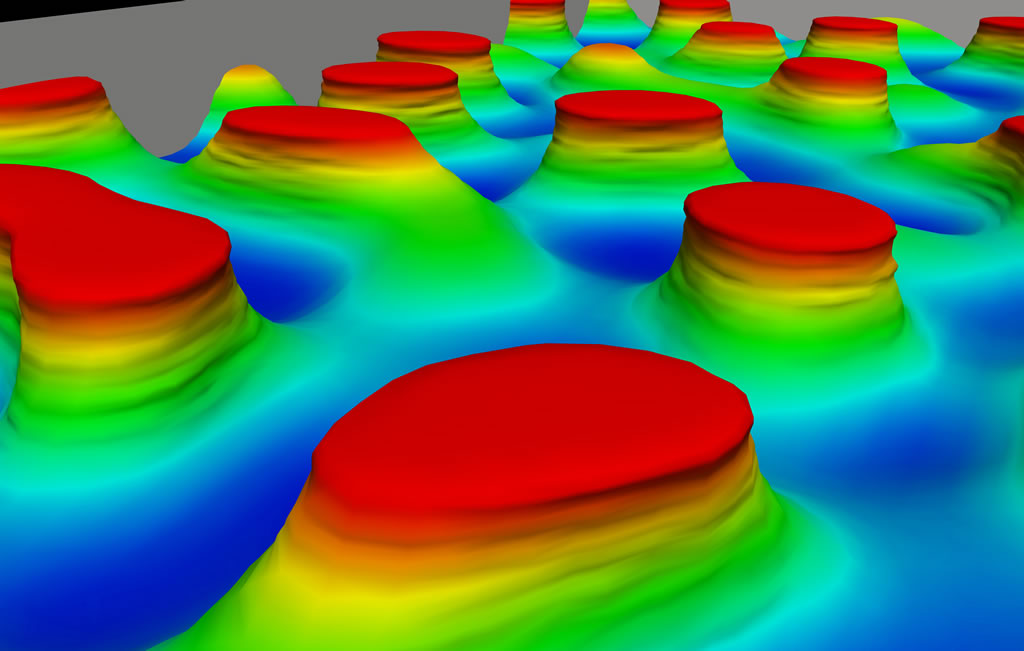Geophysical Fluid Dynamics
Snapshot of a numerical simulation of salt structures. Salt is relatively easily shapeable and forms kilometre-high structures within sedimentary basins, thereby disrupting the surrounding rocks. Most of the world's oil reservoirs are closely linked to such structures.
Salt structures and their relevance for petroleum and gas exploitation

After their generation, oil and gas start to migrate out of the source rock into a host rock. To hinder total escape, they have to be stopped by an impermeable layer such as salt or clay. Salt deposits are less dense than their surrounding rocks causing the salt to rise. The resulting salt structures can be several thousand meters high.
Due to impermeable clay layers, the oil and gas cannot rise upwards and due to the salt structures, the oil cannot escape sidewards. Consequently, the oil and gas are trapped and can be explored by drilling from the Earth's surface.

Our group is interested in the modeling of flow and deformation processes of the solid Earth. For example, how is an oceanic plate subducted into the mantle or how is a continent deformed when a mountain chain is formed?
